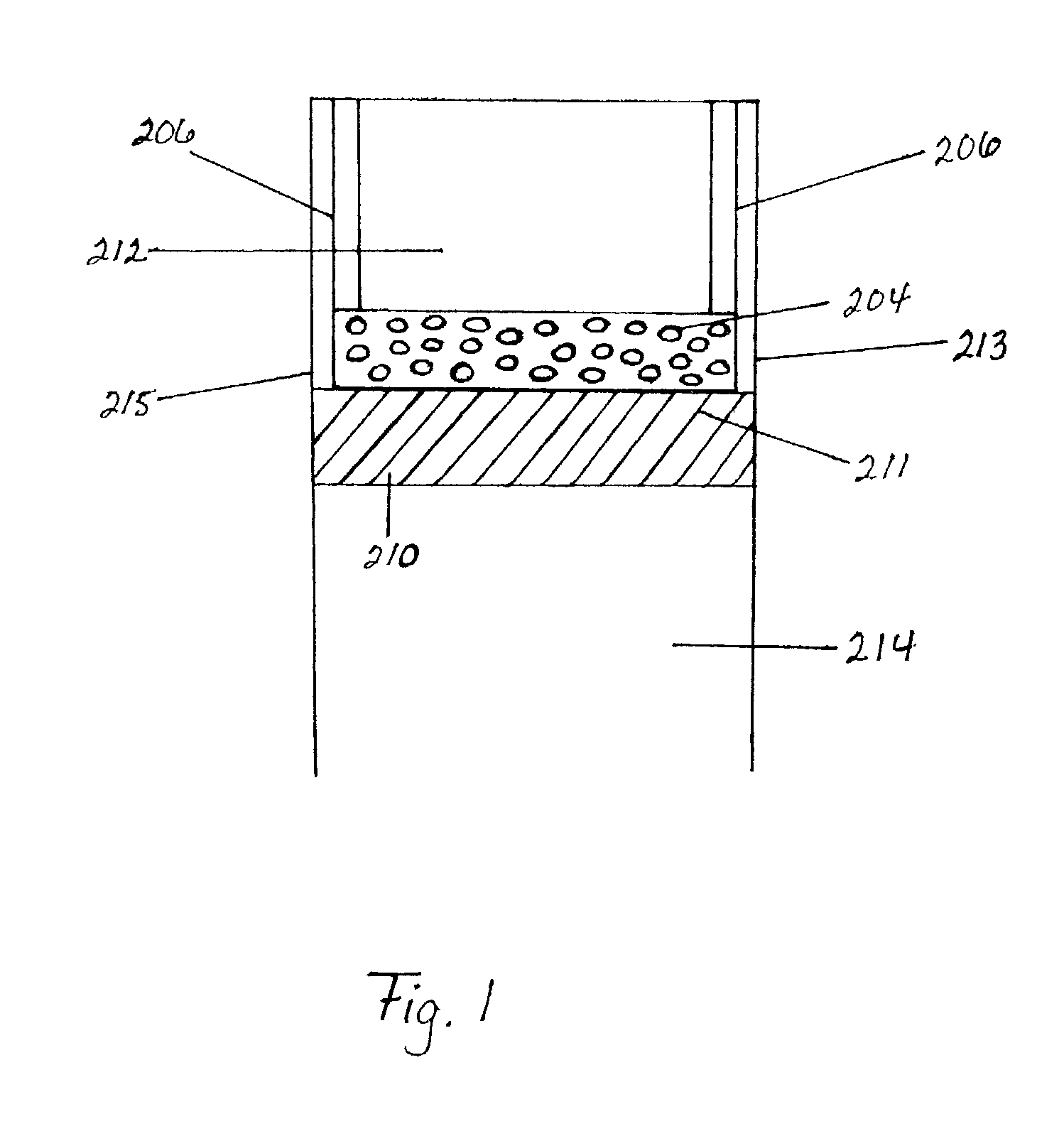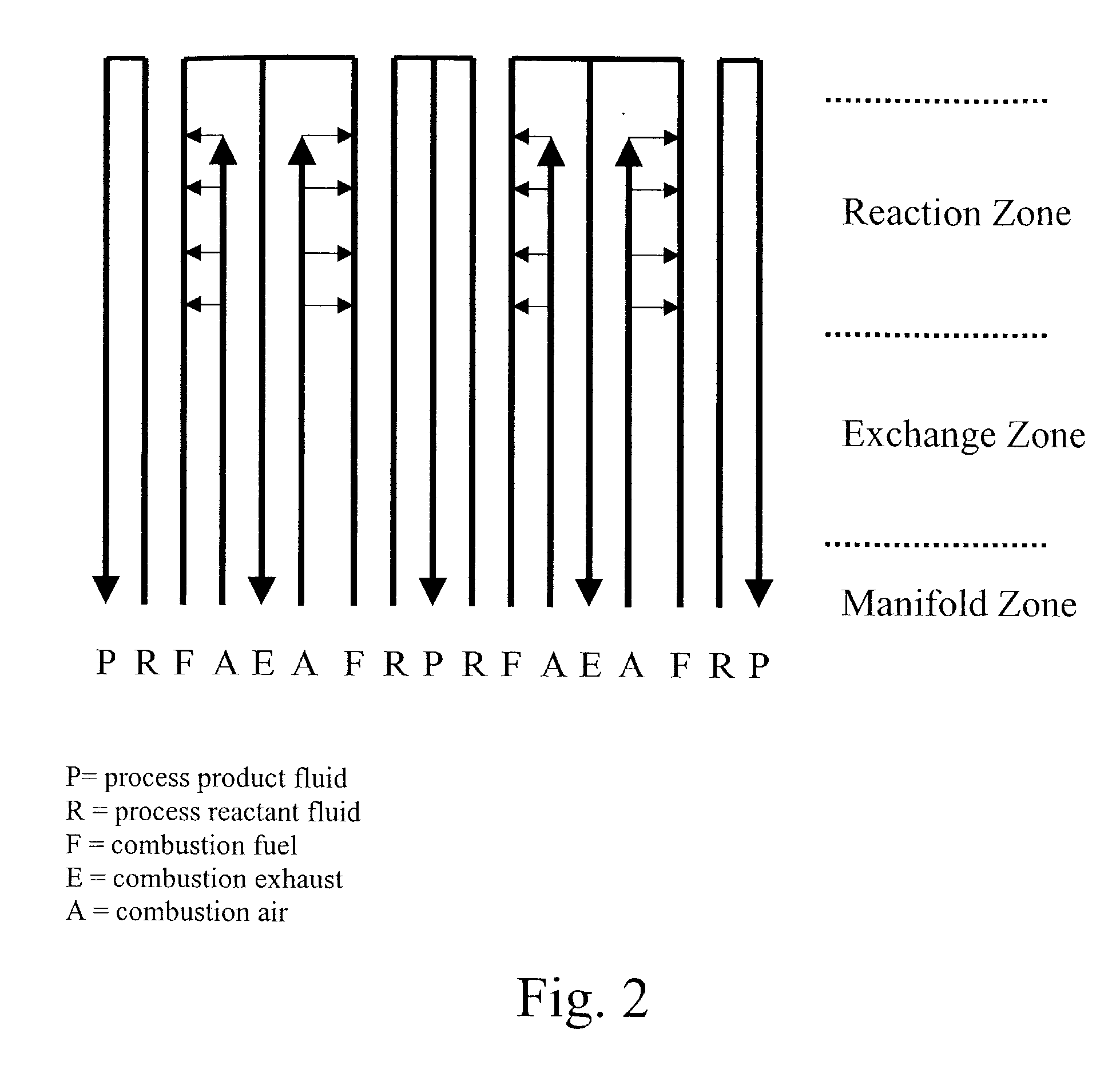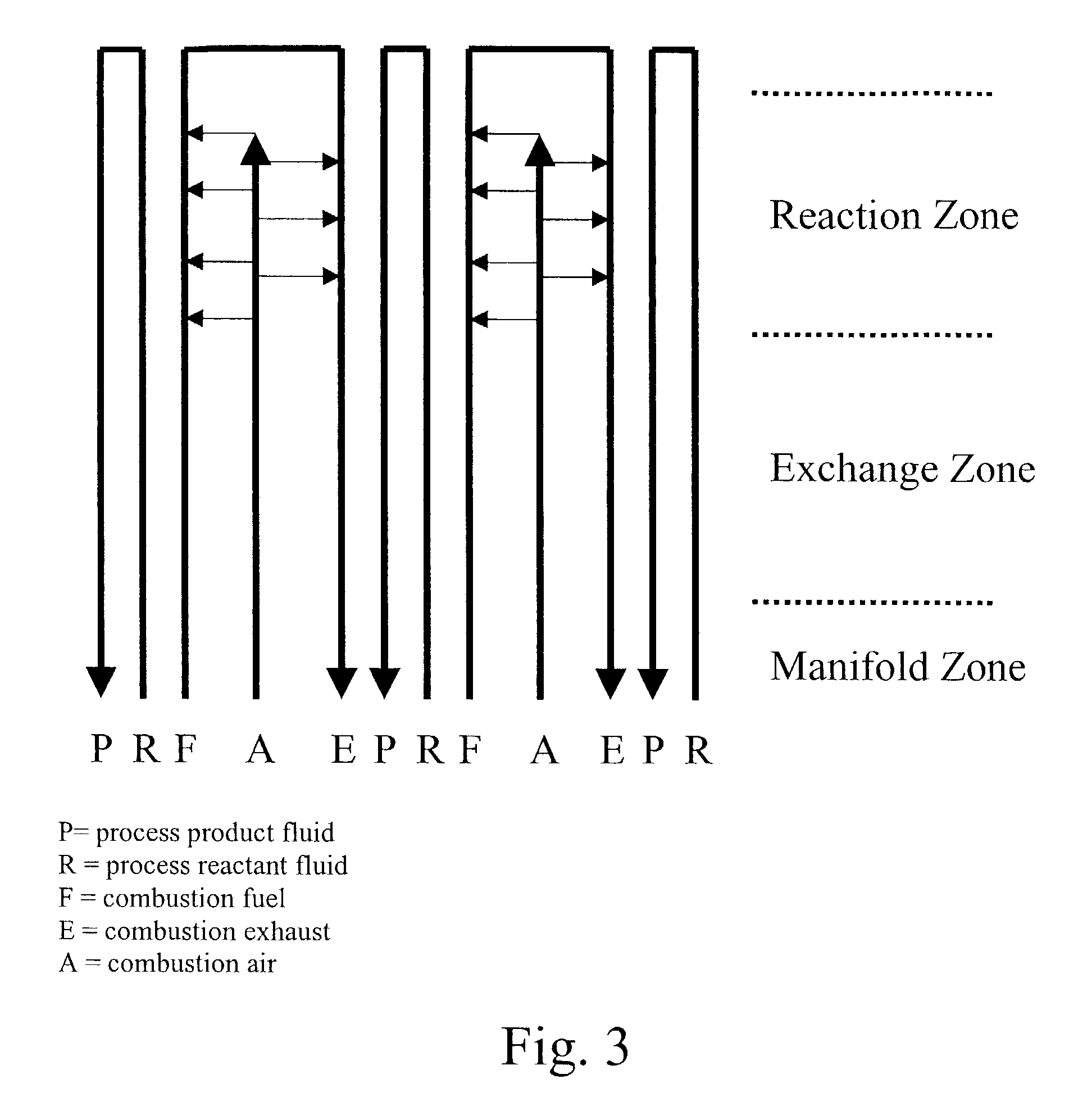Methods of conducting simultaneous endothermic and exothermic reactions
a technology of exothermic reactions and endothermic gases, which is applied in the direction of catalytic material combustion, combustion types, furnaces, etc., can solve the problems of less effective use of channels having a minimum dimension of more than 2 mm, and achieve low pressure drop, high combustion stability, and low requirement of excess air
- Summary
- Abstract
- Description
- Claims
- Application Information
AI Technical Summary
Benefits of technology
Problems solved by technology
Method used
Image
Examples
examples
[0253]Preparation of the engineered steam reforming catalyst used in the Examples consists of catalyst powder preparation, slurry preparation, FeCrAlY felt preparation, and engineered catalyst preparation. The procedure for each step is described as follows:
Catalyst Powder Preparation:
[0254]Catalyst powder used for the steam reforming consists of 10 wt % Rh / 4.5 wt % MgO / 85.5 wt % Al2O3. The specific details of sample preparation are described below.[0255]1) Spinel Support Synthesis[0256]1. Grind a neutral gamma-phase aluminum oxide, Al2O3 (≧0.8 cc / gram and ≧200 m2 / gram), and sieve to +100-mesh[0257]2. Calcine the alumina powder at 350° C. for 3-hours at a ramp rate of 5° C. / min[0258]3. In a container, add a known volume of the magnesium impregnation solution dropwise onto the alumina powder in a quantity sufficient to produce incipient wetness of the powder[0259]4. The magnesium impregnation solution is made by dissolving sufficient quantity of magnesium (II) nitrate hexahydrate (99...
examples 1 and 2
Bonded ICR Examples 1 and 2
[0298]The microchannel ICR reactor system in these examples had the two-stream loop design described in the above section entitled Description of Preferred Embodiments. The streams entering the device may either be at ambient conditions or at a slightly elevated temperature. A series of microchannel exchangers were optionally used to provide additional preheat to the streams.
[0299]A multi-channel bonded ICR device was designed, fabricated, and operated for over 300 hours. This device was formed from stacking metal plates of various thicknesses (0.25, 0.36, 0.41, 0.51, 0.64, and 6.4 mm) with various portions cut away to form channels for flow of the several fluid streams and diffusion bonding the stack together, with thicker plates placed in the outermost edges of the stack of plates (like bookends). The device included 3 exothermic reaction (combustion) repeating units flanked by endothermic reaction (SMR) channels.
[0300]The process side of this diffusion ...
example 2
Bonded Device; Results and Discussion
[0340]The bonded ICR device of Example 2 was demonstrated using methane and steam at 2.5:1 steam:C, 850 C and 12.5 atm. Testing included 88 hours at 6 ms followed by >300 hours at 9 ms. Combustion fuel composition was 5–10% CH4, 0–2% CO, 6% CO2, and the balance H2. Excess combustion air was maintained between 3 and 7%.
[0341]Results of the testing are shown in Table 2 and FIGS. 28–31. In Table 2, average reactor temperatures were assumed to be the average of the three skin temperature measurements closest to the U-turn on one face, spanning the last quarter of the reaction zone. Skin temperatures reported in Table 2 were measured along the centerline of one face, tracking the edge nearest the middle combustion exhaust channel. FIG. 28 shows the SMR performance over the entire 400 hours of operation. In FIG. 29, combustion results are shown from the bonded ICR testing. One surprising result shown in FIG. 29 is combustion CH4 conversions which excee...
PUM
| Property | Measurement | Unit |
|---|---|---|
| contact time | aaaaa | aaaaa |
| length | aaaaa | aaaaa |
| temperature | aaaaa | aaaaa |
Abstract
Description
Claims
Application Information
 Login to View More
Login to View More - R&D
- Intellectual Property
- Life Sciences
- Materials
- Tech Scout
- Unparalleled Data Quality
- Higher Quality Content
- 60% Fewer Hallucinations
Browse by: Latest US Patents, China's latest patents, Technical Efficacy Thesaurus, Application Domain, Technology Topic, Popular Technical Reports.
© 2025 PatSnap. All rights reserved.Legal|Privacy policy|Modern Slavery Act Transparency Statement|Sitemap|About US| Contact US: help@patsnap.com



